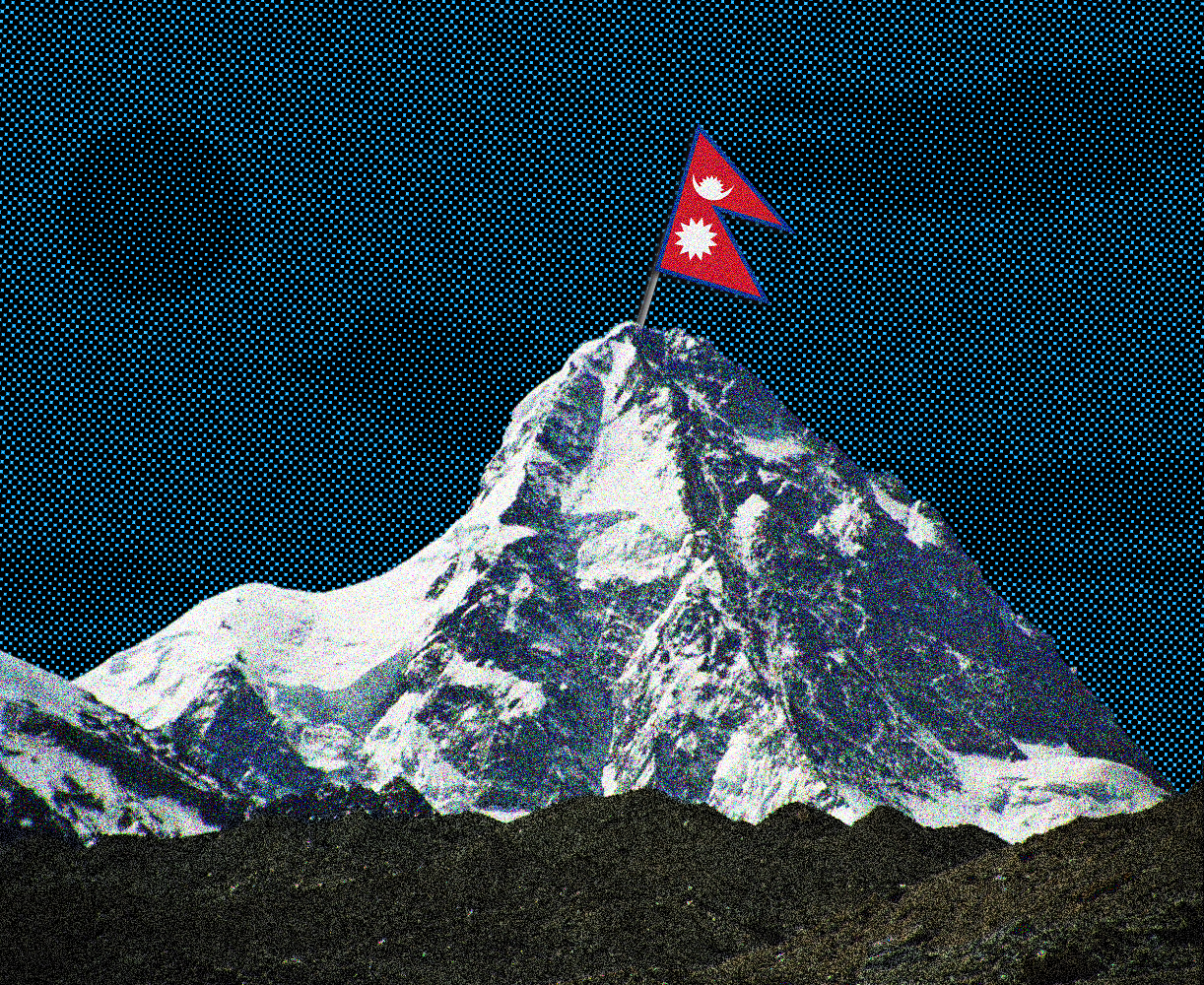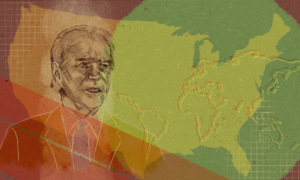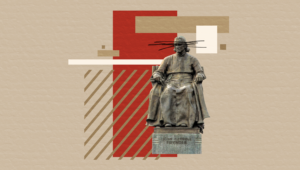On Jan. 16, the 8,611-meter summit of K2 heard the sounds of something it had never heard before during the winter months. The sound of humans on the peak in mid-January was just as unprecedented as the lyrics they were singing—the Nepalese national anthem.
Two expeditions of Nepalese climbers, 10 in total, reached the notorious summit of K2 just after 5 p.m. local time in Pakistan’s Karakoram range. Their summit success represents a major victory in mountaineering, as they are not only the first team to reach K2 in winter, but are also a Nepalese team claiming their long-overdue recognition.
The importance of such an achievement cannot be understated. Climbing K2 is already a feat of physical and mental mastery, as scaling the summit and getting down alive is one of the greatest gambles a human can take. Even after six attempts, K2 had never been summited in the winter, and for good reason. Its dangers include seracs (pillars of ice) that can turn into avalanches at a moment’s notice, a notoriously deadly bottleneck just hundreds of feet below the summit, and self-made weather from K2’s massive size. Because it is isolated from other peaks of similar height, the wind that hits K2 from the west creates storms that can carry on gusts for weeks at a time. Considering these conditions, it isn’t surprising that the mountain has a fatality rate of 29 percent, making it one of the most deadly peaks over 8,000 meters. K2’s pyramid-like shape, technical climbing, and hurricane-speed winds make the mountain far more dangerous than its taller brother of the Himalayan range, Mount Everest. Before January, summiting K2 in winter was considered the last great achievement in mountaineering.
What is far more significant is that the accomplishment goes to a Nepalese team. After a mountaineering history embedded with colonial sympathies and commercialism, the climbing world is finally recognizing the people who have always been the most talented mountaineers. The names of the climbers, Nirmal Purja, Mingma G, Dawa Tenji Sherpa, Dawa Temba Sherpa, Pem Chiri Sherpa, Mingma David Sherpa, Mingma Tenzi Sherpa, Geljen Sherpa, Kilu Pemba Sherpa, and Sona Sherpa, deserve to be in the annals of mountaineering history. They have shown the determination and skill of ethnic climbers, finally able to climb for their own sake.
In the 1950s, the golden age of mountaineering, being the first to conquer one of the 14 mountains with over an 8,000-meter peak was a symbol of national pride and international dominance among imperialist powers. Like racing to send astronauts to the moon or winning a gold medal, placing a nation’s flag on top of a deadly peak allowed a country to compete within a nationalistic world.
The race to conquer the 14 peaks, located across Nepal and Tibet’s Himalaya or Pakistan’s Karakoram (the home of K2), began with a French team’s summit of Annapurna in 1950 and finished with a victorious Chinese ascent of Shishapangma in 1964. In the years between, Swiss, American, German, Austrian, British, Italian, and Japanese teams all fought their way to the tops of the summits.
Austria technically “won” that race, with various teams of Austrian descent being the first to top out on Dhaulagiri, Nanga Parbat, Broad Peak, and Cho Oyu. The French added Makalu to their laurels following their summit of Annapurna. The Italians conquered K2. The British were the first up Kanchenjunga.
None of these climbs would have been possible without the aid and expertise of ethnic Sherpa mountaineers from Nepal. Edmund Hillary, a New Zealander, became the most famous mountaineer in history as the first to summit Everest in 1953. Ironically, his more experienced Sherpa partner Tenzing Norgay barely makes the list of well-known climbers. The disrespect shown to Norgay has been replicated across generations, with Sherpa guides climbing mountains like Everest numerous times during their careers, while their one-time clients receive the credit.
Now, Indigenous Nepalese are climbing just for themselves.
For too many decades, Sherpa climbers have disproportionately died on the mountains, not due to a lack of skill or expertise, but because they must carry out the riskiest jobs to ferry climbers to the summits. The name “Sherpa” has become more synonymous with their job description than with their identity as a Tibetan nomadic ethnic group.
The father of Mingma Gyalje Sherpa, who led one of the K2 expeditions last month, suffered frostbite on Everest and lost his fingers tying a client’s laces. In the 2008 disaster on K2, where 11 climbers lost their lives in a 24-hour period, two Sherpas, Jumik Bhote and Pasang Bhote, died while attempting to save the lives of three other climbers trapped following an avalanche. In 2014, 16 Sherpas died on Everest during an avalanche. They were carrying gear and fixing ropes for their clients between Base Camp and Camp II through the Khumbu Icefall, one of the most dangerous parts of the mountain. On Everest, one third of deaths are Sherpa guides, but they return to the mountain every year for the money, a salary which is typically seven times greater than the average Nepalese income. Despite their efforts, many Sherpas did not receive certificates of their summits, a document foreign climbers are given to prove their success, until 2018.
Last month’s ascent on K2 was different. While the six former winter summit attempts of K2 have all failed, the Nepalese teams beat all 25 other teams who started at K2’s basecamp this season to the summit. This marks a turning point in international mountaineering, and a recognition of the expertise and sacrifice of Indigenous Sherpa and Nepalese climbers since the very beginning of high-altitude climbing.
Climbing should have never been a race to begin with. To the local populations of the Himalaya and Karakoram, the mountains were symbols of deities that transcended human competition. But it is fitting that at the conclusion of mountaineering’s “golden age,” with K2 as the last 8,000 meter peak to be climbed in winter, the Nepalese are the final victors.





